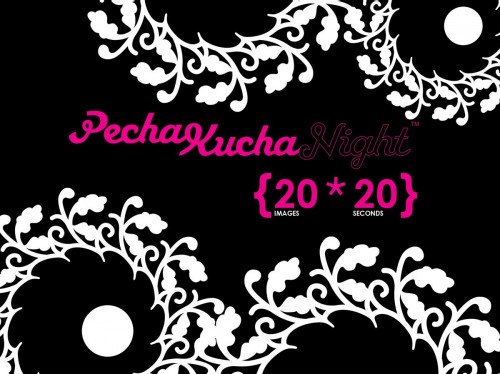I was skeptical of presenting Higher Education research in a Pecha Kucha format (see here) but has my experience of presenting in the format in the recent ECE11 conference changed how I feel?
First of all, I feel obliged to let everyone know that although spelt ‘Pecha Kucha’, it is actually pronounced ‘Pecha Kacha’, where the ‘Kacha’ does not have a strong ‘U’ sound. So have a listen to these correct pronunciations and show off to all your colleagues that you know at least two words of Japanese.

On Thursday 7th of July I presented an abstract, written with Professor Susannah Quinsee, to the ECE11 in the University of Salford. The first half detailed my experience of being UNinspired by my lecturers at University for six years of my higher education whilst the second half drew on a literature review to make recommendations on creativity and engagement.
As important as the topic of my presentation was the format of the presentation. The Pecha Kucha format requires all speakers to have 20 slides where each slide last 20 seconds, giving a speaker exactly 6 minutes and 40 seconds to communicate their message.
In hindsight, overall I am impressed by this format for presenting HE research. In comparison to longer presentation in the conferance, the Pecha Kucha presentations were much more energetic and interesting. Nevertheless, there are differences between good and evil Pecha Kucha. Here are my top tips for making a Great Good Pecha Kucha:

1. You have to be visual! This is important anyway but is even more crucial in Pecha Kucha format. The first Pecha Kucha I saw in ECE11 used just text in all slides. Now that was just wrong as it is impossible for the audience to read your slide and listen to you in 20 seconds! It affected her message because I don’t remember what she was saying.
2. Don’t just use images! A number of presentations had the right idea of being visual but went wrong in using abstract images only. Being visual is not limited to using images, instead it includes graphs, typography and colors. For example, the above slide is visual but has no images.
3. Write everything you will say word for word. The image to the right is my ‘speech’ written word for word for each slide. This has the advantage of allowing you to practice your timing to meet the 20 second time frame and keep your words succinct. However, a potential disadvantage is that you over-rely on your notes and will spend most of the presentation reading from your notes. Admitadly, I had this issue so my tip 4 is….
4. Practice with your slides and speech a number of times before hand. Use the PowerPoint timer on your computer to practice and if you choose to write everything word for word like me then this will help you memorize those lines.
5. Only do a Pecha Kucha where there are a number of other people doing the same thing. We were fortunate that the ECE11 organisers had really embraced the whole Pecha Kucha culture and did everything to make the presenters feel comfortable; the biggest comfort coming from the fact that I was presenting as part of a group of similar presentations. So if you are the only one in a conference using the Pecha Kucha format, be scared, be very very scared!
6. Watch someone else, preferably in the same conference, giving a Pecha Kucha presentation.. You will pick up invaluable lessons about the culture of that conference and will see the possible hurdles that you may face.
Below is the slides used for ECE11 conference:
[googleapps domain=”docs” dir=”viewer” query=”a=v&pid=explorer&chrome=false&embedded=true&srcid=0B-hlVJRmdzVsMzcxOWRkZmItMzc1OC00MTZiLTgyYjctODU4MTgwOTdhNzMx&hl=en_GB” width=”100%” height=”560″/]

